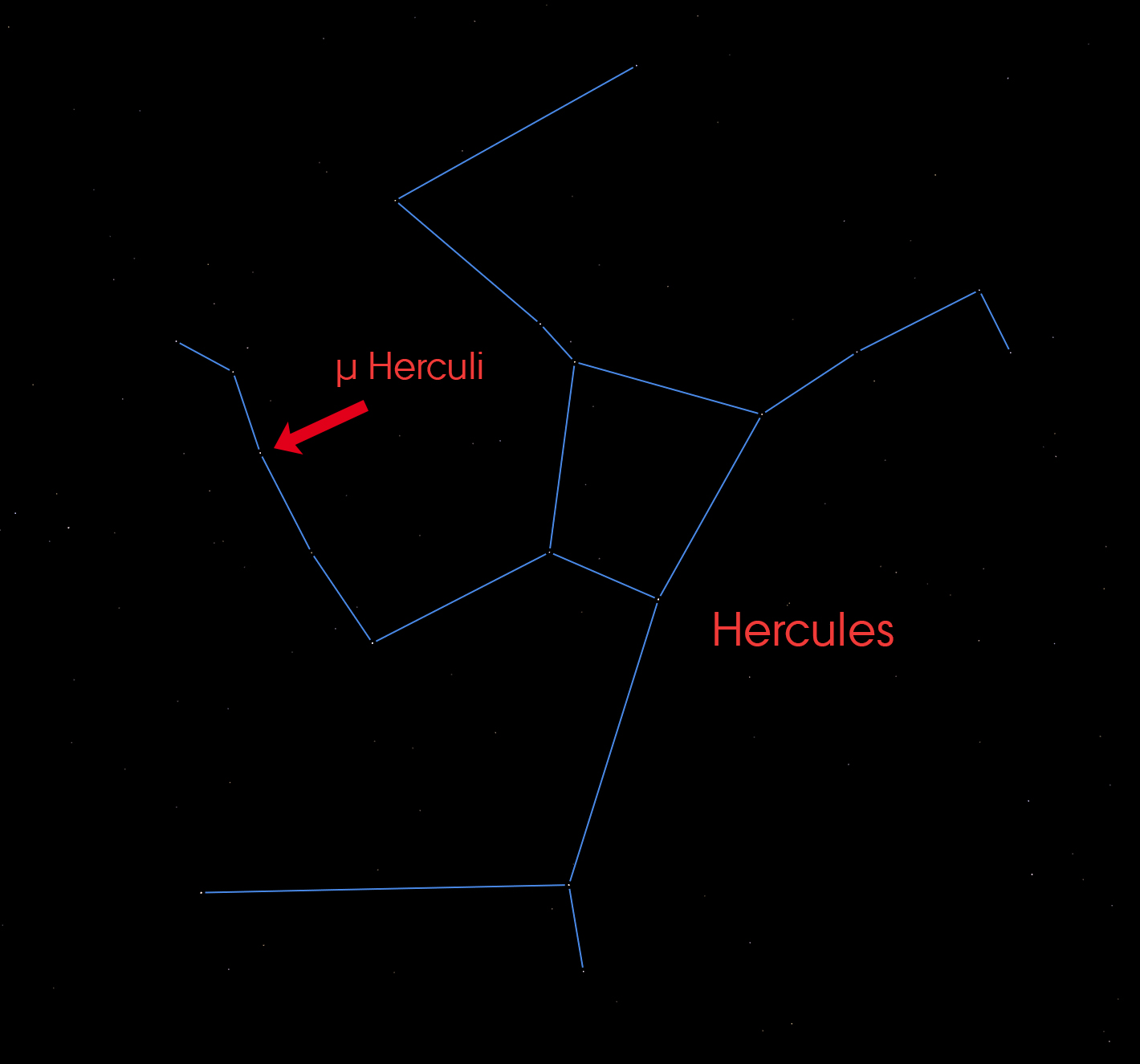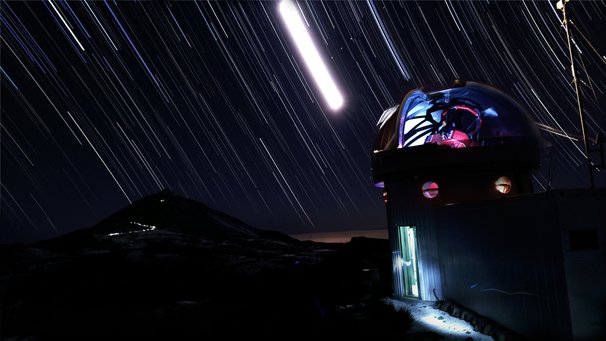μ Herculis – first paper from the SONG project
The first paper from the SONG project, has been published in ApJ. SAC's Frank Grundahl is lead author. This solar type star has been observed for 215 nights; a new record, resulting in vastly improved parameters. The new results may lead to a revision of standard stellar models.

SAC's Frank Grundahl is lead author on a recent paper in Astrophysical Journal, giving the first results from the Danish SONG project - a collaboration between the universities of Aarhus and Copenhagen and IAC in the Canary Islands. The paper describes results from 215 nights of observations of the star ? Herculis. This is the longest series of observations of a solar-type star ever. Because of the high quality of the new results, this will lead to revisions of standard star models.
We now know much more about this star than previously, thanks to the SONG telescope. Actually we know a little too much! The data obtained show that there are details that even the most advanced stellar models do not take into account. SAC centre leader professor Jørgen Christensen-Dalsgaard is not sorry. On the contrary: "With these observations we have a much better understanding of this type of star. This will be an exellent opportunity to test our present models and adjust them accordingly."
? Herculis on video
Frank Grundahl and Jørgen Christensen-Dalsgaard explain stellar models and the new ? Herculis results in this short YouTube video (in Danish) from SAC: https://youtu.be/358aEUuCQDk
? Herculis A is the brightest in this quadruple stellar system. It is of similar type as our Sun, but somewhat older and some 10-15% more massive. At present it is evolving from an ordinary mainsequence star into a giant - taking a couple of million years in the process.
Improved parameters
The study of ordinary stars is especially important. Of course exotic stellar objects are exiting, but to understand the deep nature of all stars, a solid basic knowledge of the majority is needed.
The new ApJ paper makes a further step along this road. These SONG observations have improved our knowledge of the important parameters of this star. Age, rotational period, surface temperature, abundance of elements, brightness, diameter and inner structure are now known to a much higher precision. Project manager for SONG assistant professor Frank Grundahl states that it can be improved even further: "The whole idea of SONG is enabling us to observe selected stars over very long periods of time. In 2014 and 2015 we observed ? Herculis A for 215 nights in total, and we continue this on Tenerife at every possible opportunity. The longer the observation period, the better precision we get. In our present situation we need to break up observations for various reasons; mainly because of the occasional daylight on Tenerife. With SONG we intend to install a network of identical telescopes spread around the Globe in a way that the next observatory towards the West takes over observations continually when it starts dawning on a more easterly site. With at least 4, and hopefully 8 sites in operation we will be able to observe 24-7."
Hertzsprung SONG telescope on Tenerife. Teide volcano is on the left. The Moon and the stars draw tracks across the sky while the telescope is working, and a plane is passing with flashing wing lights.
The SONG Network
The first SONG telecope in the network is in operation on Tenerife. The next one at Delingha in Western China is very close to being fully operational.
The SONG telescopes are relatively small compared to the giants in existence or being constructed around the World. The main mirror diameter is only one meter. The SONG telescopes are equipped with various instruments, a spectrograph being the most important. Small oscillations in the boiling gas surface of the stars can be accurately measured by this instrument. The method, called asteroseismology, is analogous to seismic measurements of the internal structure of the Earth by geologists.
The SONG spectrographs measure radial velocities on the stellar surfaces with a precision that exeeds other observations of stellar brightness variations done e.g. by the Kepler satellite.
One handed controls
An important element in the SONG project is that the telescopes are fully automatic and can be remotely controlled. Only for repairs og upgrading of hardware is a visit by a technician or astronomer nescessary. Most times the researcher will enter the stellar positions and the details of the needed obsevations via a homepage (requiring special access, though), and the robotic telescope will then execute the observations at the next possible opportunity or at a specifically required time. Mads Fredslund Andersen is leading software developer and second author of the new paper. He explains: " Not having to sit up all night observing can be very convenient, not the least for me, being a proud new father that needs some hours of sleep whenever it is possible. I can sit at home with an ordinary tablet and follow the observations, adjusting the schedule and controlling the telescope on Tenerife while feeding the baby with the other hand!"
Over the last two years the Hertzsprung SONG telescope has been harvesting data from various stars, and other exiting results are in the pipeline. A smiling Frank Grundahl sums up: "These 215 nights of observations of ? Herculis is the longest series of observations of a solarlike star ever done from Earth. Seeing this project grow and mature has been absolutely fantastic. We have got all that we expected and more. We have shown that with relatively limited ressources we can compete via groundbased observations with results from the extremely expensive satellitebased telescopes. And much more is coming!"
The paper is available here.

